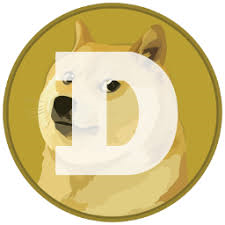September 19, 2024
These Memecoins Are Getting Serious(ly Useful)
Dear Subscriber,
 |
| By Jurica Dujmovic |
Not long ago, I wrote about the fascinating surge of politically themed memecoins in the cryptocurrency world.
Today, I want to revisit the broader memecoin landscape and explore a trend that's been quietly reshaping this sector for a while now.
And that is the evolution of memecoins into tokens with genuine utility.
The idea alone is wild.
By definition, memecoins have no utility. Investopedia categorizes them as “a cryptocurrency named after characters, individuals, animals, artwork, or anything else in an attempt to be humorous, light-hearted and attract a user base by promising a fun community.”
Overall, memecoins survive based on the strength of their communities and popularity.
But that is starting to change. We are seeing more memecoins begin to integrate real-world use cases.
As this trend picks up speed, it blurs the line between memes and serious financial innovation.
Let’s start with the most obvious examples: Dogecoin (DOGE, “B-”) and Shiba Inu (SHIB, “C+”).
Dogecoin launched in 2013. And from the beginning, creators Billy Markus and Jackson Palmer intended it to be satirical. It was meant to make fun of the wild speculation surrounding Bitcoin (BTC, “A”) at the time.

Dogecoin icon.
Click here to see full-sized image.
But in the years since, this joke has turned serious as adoption soared and its community grew.
Dogecoin is now an accepted form of payment by over 40,000 merchants worldwide. And we’re not just talking small fry, mom-and-pop shops. Large organizations like Tesla and the Dallas Mavericks now accept DOGE right alongside the mighty dollar for their goods and services.
Looking ahead, the Dogecoin team is even working on projects to boost DOGE’s usability. GigaWallet, for example, aims to make payments easier for retailers. And RadioDoge hopes to expand Dogecoin's use in areas with limited internet access.
Similarly, Shiba Inu has evolved from a mere Dogecoin imitator into a key player in the decentralized finance space. It has its own decentralized exchange, ShibaSwap, that allows users to stake, provide liquidity and swap tokens.
And in development right now is Shibarium, a Layer-2 scaling solution to improve transaction speeds and reduce costs.
These are just two examples — and I have more coming in a bit — but they are great at showing how far memecoins have come … and where they can go.
What started as a joke has now evolved into a serious contender in the blockchain space. Now, memecoin projects are pushing the boundaries of what's possible when community engagement meets technological innovation.
Just look at Floki (FLOKI, Not Yet Rated). Originally inspired by Elon Musk's Shiba Inu dog, FLOKI has developed into a multi-faceted crypto project operating on both the Ethereum (ETH, “A-”) and BNB Chain (BNB , “C+”) networks.
FLOKI's ecosystem revolves around three pillars: its meme status, utility and charitability. The project is developing several initiatives, including ….
- An NFT gaming metaverse called Valhalla,
- A suite of DeFi products named FlokiFi,
- An NFT and merchandise marketplace called FlokiPlaces
- And Floki University, an educational platform.
Pepe Unchained (PEPU, Not Yet Rated) is using a different approach to ride this revolution. It wants to combine the viral appeal of the Pepe meme with DeFi tools.
Built as a Layer-2 blockchain in the Ethereum ecosystem, Pepe Unchained focuses on staking rewards and low-fee transactions, giving it tangible utility beyond meme culture.
The project’s success lies in its strong community engagement and growing ecosystem. Both position it as a notable player in the memecoin space. By offering secure, fast transactions and staking, Pepe Unchained continues to build out its utility in a low-cost, scalable environment.
But while the examples above are using their popularity and communities to cross the divide into real utility, others are looking to incorporate broader meme culture in the process.
I already spoke about WeinerAI (WAI, Not Yet Rated). TL;DR: This project wants to use AI as a trading bot for memecoins.
Similarly, Meme AI (MEMEAI, Not Yet Rated) aims to use AI for meme creation, customization and monetization through NFTs.
The project's core feature is its AI-driven meme generation and customization tool. Users upload images, then the AI recognizes and provides options for customization.
This process allows for the creation of unique, personalized memes that can be minted as NFTs on the platform's marketplace.
MEMEAI also incorporates AI technology to identify and curate trending memes from across the internet, creating a dynamic and engaging ecosystem for meme enthusiasts. The platform operates on a decentralized model, giving users control over their digital assets and transactions.
Projects like WeinerAI and MemeAI are cool. But they represent the convergence of two sectors. Investors looking for pure AI plays should keep looking.
And if you want a hint at where, I urge you to check out this presentation on the companies about to take advantage of one AI giant’s $1 trillion pivot.
Navigating the Challenges
Despite the exciting developments in the utility memecoin space, it's crucial to approach these projects with a healthy dose of skepticism.
Memecoins are still notoriously volatile. And even ones with utility aren’t insulated from that just yet. Especially when the near-term broad market trends shift as frequently as they have been.
But beyond volatility, one of the primary challenges utility memecoins must overcome is sustainability.
While integrating DeFi features like staking and yield farming can provide short-term incentives for token holders, projects need to develop long-term value propositions to survive beyond the initial hype phase. That’s a large ask for projects that have been able to subsist on popularity to this point.
Additionally, as these projects become more complex, they face increased regulatory scrutiny. Navigating the evolving regulatory landscape while maintaining the decentralized, community-driven ethos that defines memecoins will be a delicate balancing act.
There's also the ever-present risk of scams and rug pulls in the crypto space. As utility memecoins gain popularity, bad actors may attempt to capitalize on the trend by launching projects with promised utility that never materializes.
Furthermore — just like in the broader crypto market — many projects will likely fail when they are unable to sustain their initial momentum or deliver on ambitious promises.
The challenge for investors and memecoin enthusiasts will be to distinguish between projects with genuine long-term potential and those riding temporary waves of hype.
Despite these risks, the rise of utility memecoins represents a unique opportunity in the cryptocurrency landscape. When developed responsibly and transparently, these projects can bridge the gap between the often-intimidating world of blockchain technology and the average internet user.
The key lies in their ability to leverage familiar, engaging concepts — like memes — while introducing real utility.
As this space continues to redefine itself, we can expect to see further innovation. Perhaps we'll witness memecoins tackle real-world problems, integrate with traditional finance or even push the boundaries of blockchain technology in ways we haven't yet imagined.
Needless to say, I'll be watching this space with great interest. Investors interested in staying on the front lines of crypto development may want to do the same.
The line between meme and utility continues to blur, and in that blurring, we might just find the next big innovation in the world of cryptocurrencies. Of course, I’ll keep you updated with any new information right here in Weiss Crypto Daily.
Until then, one thing is certain: The meme economy is no longer just a laughing matter.
It's become serious business.
Best,
Jurica Dujmovic
Tidak ada komentar:
Posting Komentar